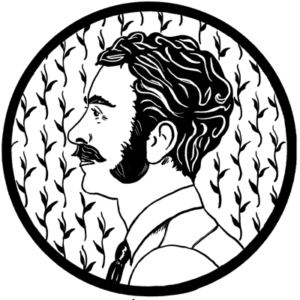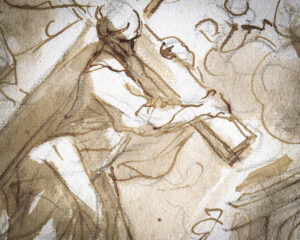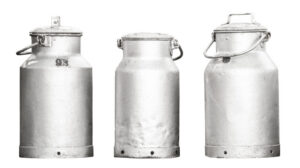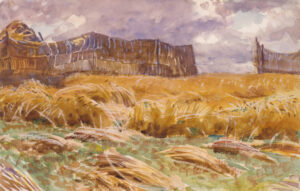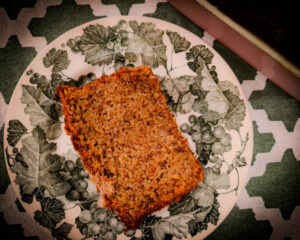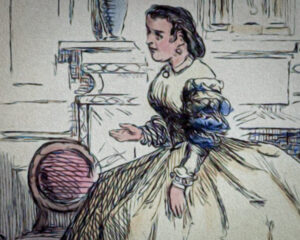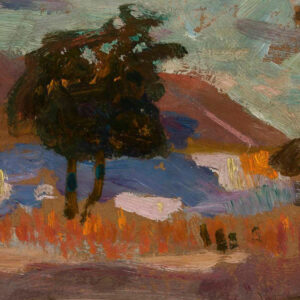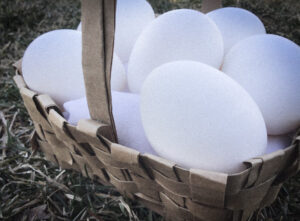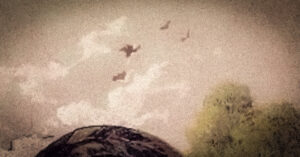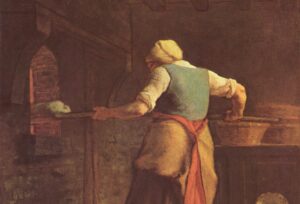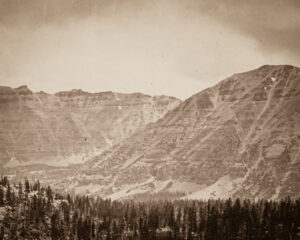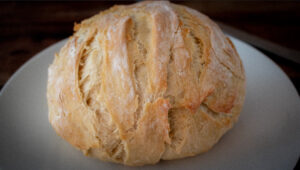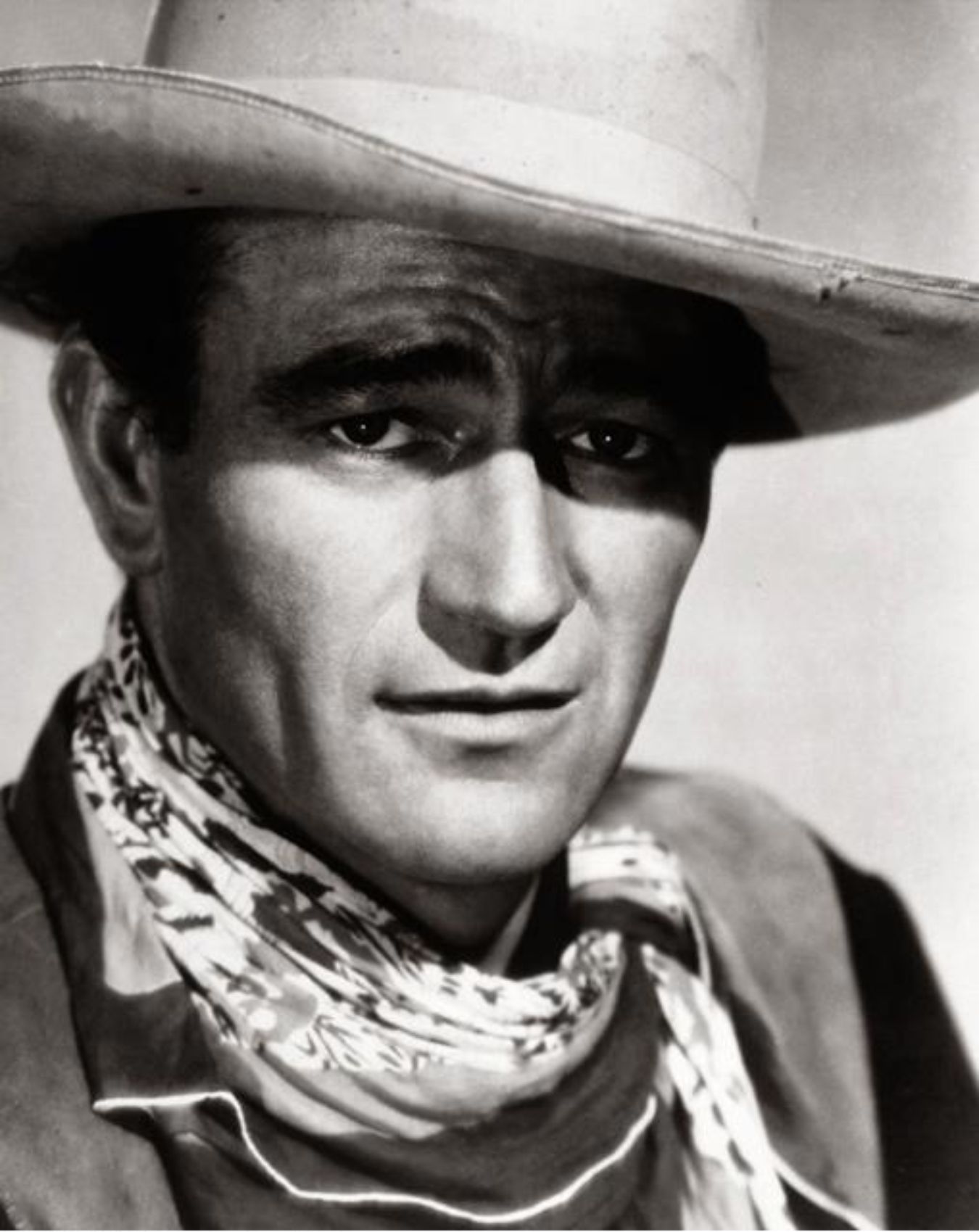
Strike Anywhere
A Wandering Review of Matches

Mr. Samuel Butterofen
John Wayne stands a’swaggerin’ at the omega point of human progress each time he effortlessly lights a match by striking it wherever he pleases. What paleolithic Frenchman, laboring over his fire in some dark, Périgordian cave, did not ache in his Neanderthal dreams to apply the flint to his britches or bootsole with the Duke’s own careless bravado? From deep in the collective consciousness, every man still longs like Loki to strike anywhere and magically start a fire.
But fire took a long route from the ancient cave to the Duke’s instant flame.
The elusive alchemy of bringing forth living gold at the tip of a splinter began, it seems, in sixth century China, with sticks of sulphur-impregnated pinewood. But it was Hennig Brand (derisively called “Dr. Teutonicus”), an alchemist from Hamburg searching for the philosopher’s stone, who in 1669 boiled putrefied urine down into a paste and stumbled upon flammable phosphorus: the element of destiny. Brand found himself the target of ridicule from educated men, who were working for European princes, attempting such an achievement themselves. The relatively uneducated Brand could not read Latin and had recourse only to German treatises, thus earning him his mocking moniker — “German Doctor” in Latin. But, as with so many landmark innovations, it was the tinkerer, the scorned Teutonicus and not the elevated expert, who prevailed. The flame of creativity requires always a bit of open air to ignite.
By the late nineteenth century, Brand’s discovery had developed into the industrial production of matches. Factory workers’ tragic contraction of “phossy jaw” and the London matchgirls strike of 1888 defined a difficult chapter in the story of matches, capped by the rise and fall of the unscrupled, international match magnate and original ponzi-schemer, Ivar Kreuger. But with much ingenuity and some internal searching, the industry emerged from these dark forces. It pioneered and perfected the hygienic match, and the world saw a new light of fire-making.
Today’s “strike anywhere” match is the highest attainment of the long labor of the matchmakers’ art and mankind’s signal victory over chaos and darkness.
Today’s “strike anywhere” match is the highest attainment of the long labor of the matchmakers’ art and mankind’s signal victory over chaos and darkness. Typical “safety” matches require that red phosphorus be present in the abrasive surface upon which they are struck. But strike-anywhere varieties (reasonably safe themselves nowadays) contain red phosphorus within the match tip itself. These combustive marvels need never taste the sandpaper side of a matchbox; they can be struck not only on boots and britches, but on brick walls, tavern furniture, or Wayne’s own stubbled jaw. Waterproof strike-anywheres are, of course, a prudent choice (though you can waterproof any match yourself by dipping it in melted candle wax). Wind- and storm-proof varieties only represent further advanced conquests.
What primordial gravity and Promethean catharsis are thus available from each and every consciously well-struck and well-savored match! Some Jungian archetype was surely at play when a patriotic American company joined the war effort of the 1940s with a novelty set of bomb-shaped matches, hinting with each diminutive detonation at a profound pleasure of victorious power. The box bore a cartoon of the bent-over Führer, invitingly offering the khaki derriere of his National Socialist trousers as the abrasive striking surface: “Match ‘em Bond for Bomb,” it reads, “Strike at the Seat of the Trouble – Buy War Bonds.” The triumphant joy of lighting a well-made match and doing it anywhere that one happily pleases holds power to chase away both the natural and moral night.
The lesson here is simple. Appreciate all your dealings with matches. For you, the dangers and struggle of long millennia are tamed. You hold fire in your hands at half a cent a mini-combustion. To this end of appreciation, along with an informed sentiment of humble gratitude, some basic principles and expectations should serve you as a guide.
The lesson here is simple. Appreciate all your dealings with matches. For you, the dangers and struggle of long millennia are tamed. You hold fire in your hands at half a cent a mini-combustion.
Above all, matches should always be wooden sticks in a box — a collection of miniature torches in a portable drawer — not cardboard tabs in a paper booklet advertising some dismal restaurant or auto insurance. Be master of your matches and buy them yourself. Do not passively collect whatever inferior promotional merchandise haphazardly finds its way into your pocket. Your annual expenditure on a supply of fine matches will never top the price of a single bottle of tolerable whiskey.
In choosing between brands and models the following comments may accordingly prove helpful. (The discussion here concerns matches for domestic use; specialty outdoor gear requires turning to virtuoso matchmakers such as UCO and the Swiss company, Relags.) Red is the color of a match head. It is the non-poisonous allotrope of the fifteenth element on the periodic table, whose discovery and use mark the final turning point in the long drama of matchmaking. Avoid, therefore, blue or green tips, except on special occasions, such as young children’s birthdays. For such events, one can recommend the signature, sky-blue “Cowboy Matches” sold by WIC, a German make. They come in a neat box bearing a nice drawing of a mounted cowpoke, set against a western sunset scene, emblazoned with a saloon-style font reading simply: “Cowboy Matches.” These are excellent matches for light duties such as cake-candle lighting, but real cowboys will not use them. Wagner Match peddles customizable boxed matches in sixteen different Crayola-like colors, but “Cowboy Matches” should be preferred.
It is unfortunate to say that the former pride of American matchmaking, the giant Diamond Match Co., once piloted by O.C. Barber of Akron, Ohio (until the wicked Kreuger gained control), has recently lost its way, wandered into the plastic cutlery business, and now offers a Greenlight series of “strike anywheres” with artificially dyed green tips. The new box design has lost focus and, following this gimmick, the number of reported duds per box has been remarkably high (sometimes topping twenty-five percent). Diamond’s mother company, Jarden Corp. (now itself under the conglomerate, Newell Brands), acquired Ohio Blue Tips (formerly the Ohio Match Co.) and quietly retired the brand in 2011 to concentrate on Diamond; but the loyalty of a vocal clientele, notably cigar-smoking purists, has called back this sturdy, historic make. The shafts of both the Greenlights and Blue Tips are uniformly good and each whipping scratch and sizzle will delight. They should be used with reserve and appropriate airs of pretension. The classic box will, nevertheless, afford the user special pleasure and the antiquity of Ohio’s gimmicky colored match stunt should be (begrudgingly) chosen over Diamond’s novel dabbling in green.
Blue Tips can thus be recommended for luxury events, such as pipe and cigar (and wad of cash) smoking, or the very rare (!) use of rainbow flame crystals at the hearth for a 70s night. The community of Wadsworth, Ohio, once home to the Ohio Match Company, continues to celebrate an annual festival at which they ignite a seventeen-foot matchstick (the world’s largest), which proudly burns for twenty-four hours, shining like a great beacon of hope for the dark world — an Alexandrian Pharos. It may indeed be hoped — and one need be no phillumenist to hope it — that this celebrated company may one day be freed from the corporate monster that swallowed it live and returned to the community that still remembers and reveres it. On that day, some of Ohio Match’s other fine former trademarks might also be recalled out of match oblivion: the “Junior” (Ohio’s version of the Midget, issued in the 1930s), the “Rosebud,” “Armadillo,” “Chief,” “Fife and Drum,” the “Ohio Noiseless,” the “Pilot,” and the inimitable “Royal Star.” Today, tragically, Blue Tips are only available in a strike-on-the-box variety.
It may indeed be hoped — and one need be no phillumenist to hope it — that this celebrated company may one day be freed from the corporate monster that swallowed it live and returned to the community that still remembers and reveres it.
Redbird Matches are, at the current time, the most reliable strike-anywhere red-tip matches commonly available. They are proven to be nearly dud-free and shown in repeated testing to light not only on rough surfaces, but even on smooth textures, like ax heads and floors. This will undoubtedly be useful for the many times one forgets to carry the pleasantly unpretentious Redbird box while striding to the fireplace, grill, or leaf pile to light a fire. Lighting gas burners, kerosene lamps, charcoal briquets, and other such things should be the regular job of such redheaded matches. As proper technique is required to enjoy the full contentment of lighting a match on any old surface, a word on snapping, a delicate matter, might be added: It is wrong to think that good matchsticks will never snap. Complaints against Redbird on this account should be met with suspicion. Most snapping is a question of improper technique — usually the incorrect placement of the thumb and forefinger or striking with the wrong angle and force — though poor quality can, of course, at times be an issue.
Redbirds are not perfect, but in our era they do not have extensive competition. The devolution or discontinuation of many traditional strike-anywhere brands, such as Penley and UCO, is due both to corporate buy-outs and also to expensive hazmat regulations, which have made shipping prohibitively expensive. Online shipping of matches through Amazon should be avoided whenever possible, even if it is to acquire backstock of trusted brands; boxes can indeed ignite in transit through simple friction, but, more to the point: Amazon. Clearly, there are many reasons to desire more locally sourced, quality match production! Therefore avoid the temptation to savor any perceived poetic symmetry in the return of match-making to its Chinese origins. As with most things, the place of consumption and the place of production ought to be as proximate as possible: if you do not burn your matches in China, do not buy your matches from China.
In short: acquire the right wooden matches, locally if at all possible, learn the proper technique, and join the Duke at the fiery summit of all cosmic striving.

